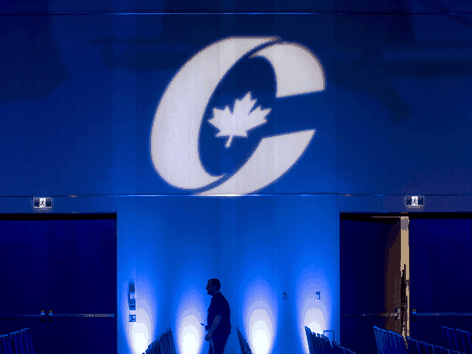We don't need a more (or less) conservative party
Tories could guarantee victory and build a sustainable position in Canada’s political marketplace, if they learn to be more pragmatic and to build electoral coalitions around it

First published in the National Post on March 9, 2022.
The Conservative Party of Canada has begun its ritual gutting of chickens and poking of entrails to divine which new leader will bring it electoral victory. Conservatives are looking for a sweet spot where they can be conservative enough, but not too conservative, in order to attract just enough voters in just the right places to win government. I’ll save them the effort. That spot doesn’t exist along the liberal-conservative political spectrum that governs Canadian political thinking.
If you think former Conservative leader Erin O’Toole lost the last federal election because he swung the Conservative party too far to the left, you’re wrong. If you think Mike Harris won two back-to-back majorities in Ontario because he was a “real” conservative, you’re wrong. If you think Rob Ford became mayor of Toronto because he appealed to “hidden conservative values” in Canada’s most liberal stronghold, you’re wrong, as well.
Political strategists see the world divided into a political spectrum with hardcore liberals on the left, hardcore conservatives on the right and an ill-defined and constantly shifting mishmash of “centrists” in the middle. But this one-dimensional view of politics vastly oversimplifies reality.
Humans are complex. Groups of people even more so. Our political behaviour cannot accurately be measured in just one dimension. Trying to do so has produced spectacular electoral failures and head-scratching victories.
Sure, some people are inherently conservative in their views of the world, others more liberal. But that is not the only difference that defines us. There is at least one other scale that helps explain how we vote: where we fall in terms of our preferences for ideology versus pragmatism. It’s time more political strategists understood this.
For example, which describes you better: are you an ideologue who is excited by ideas, values, theory and global initiatives designed to improve the general good over the long-run; or are you a solution-oriented pragmatist who values policies and practical measures that make life a little bit better, right here, right now? Likely, you’re somewhere in the middle.
We each occupy a place on both the liberal-conservative, left-right spectrum and the ideologue-pragmatist dimension that intersects it (like the “Y-axis” for math nerds.) Many Canadians are liberal-minded ideologues. Others are conservative-minded ideologues.
Both live at the same end of the ideologue-pragmatist dimension, but differ greatly along the traditional political spectrum. These people shape most political policies and campaign strategies. Perhaps that explains their blindness to other dimensions that drive political behaviour.
But there are also liberal- and conservative-minded Canadians who fall on the pragmatic end of the chart. This describes most Canadians.
This second scale helps us better understand how Rob Ford was elected mayor of Toronto. He built a coalition of pragmatists from across the traditional liberal-conservative spectrum, who were united by their desire for city government to be more focused on practical matters: picking up garbage, making buses run on time, minimizing tax increases. His competitors fought their campaigns based on ideology and lost, while Ford’s campaign tapped into the pragmatic needs of Toronto residents.
Similarly, after decades of government dominated by Conservative ideology that many believed was not improving the lives of average Albertans, Rachel Notley appealed to their pragmatic interests. Albertans didn’t become less conservative. Instead, Notley united them with pragmatism, and later lost when she couldn’t deliver on that promise.
Similarly, Mike Harris wasn’t elected premier of Ontario twice because he was a “real conservative.” He built his “common sense revolution” on the pragmatic needs of Ontarians. When his successor drove the Progressive Conservative party to become more ideological, it lost. Not until Doug Ford brought his brother’s “Ford nation” — a coalition of pragmatists, not ultra-conservatives — to bear on Ontario politics did the PC party return to power.
If the Conservative party wants to form Canada’s next government, it could wait until voters are so disaffected with Prime Minister Justin Trudeau that they will happily elect a tree. But that’s almost always a losing strategy. Instead, Conservatives could guarantee victory and build a sustainable position in Canada’s political marketplace, if they learn to be more pragmatic and to build electoral coalitions around it.
Canadians don’t want to replace the progressive dogmatism of Justin Trudeau with the competing ideology of conservatism. Most Canadians don’t give a damn about ideology. We want practical, common sense government that addresses our needs here and now. Yes, we care about longer-term, generational and global issues. But not at the expense of life right now.
The Conservative leadership race creates a timely opportunity for Conservatives to seize the winning ground as Canada’s pragmatic party. It doesn’t need to be more or less conservative — it needs to be more pragmatic, just like most Canadians.
But any other party could do the same in the next election if Conservatives don’t act now. If they cede pragmatism to another party, Conservatives may find themselves on the opposition benches for a long time to come.
Mark Towhey is an advisor to business and political leaders who served as former Toronto mayor Rob Ford’s chief of staff and later editor-in-chief of Canada’s Sun newspapers.



